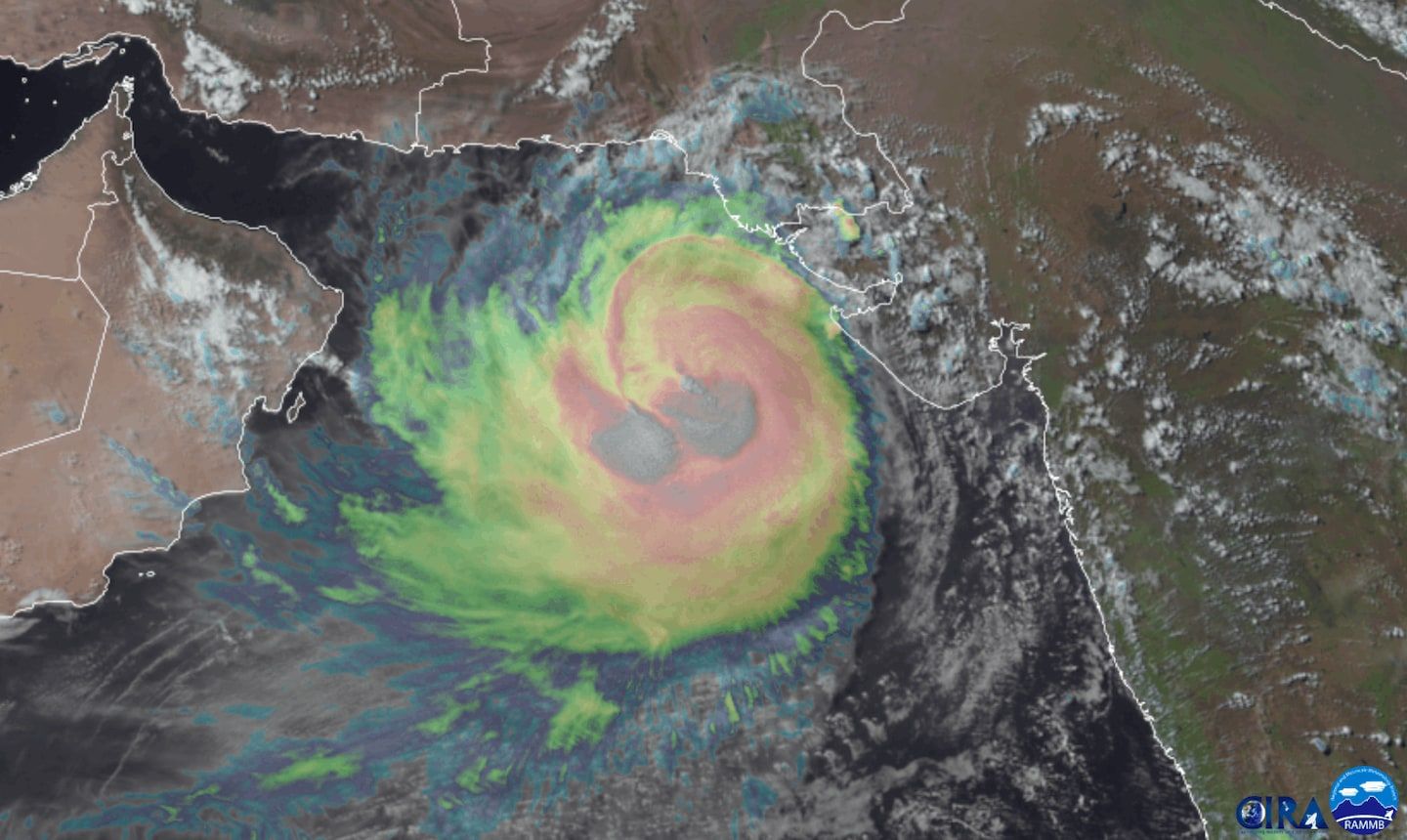Cyclone Biparjoy approaching landfall near border of India and Pakistan
Listen 3 min Comment on this story Comment Gift Article Share
One of strongest tropical cyclones on record to roam the North Indian Ocean is bearing down on the coast of India and Pakistan. Cyclone Biparjoy — the equivalent of a Category 2 hurricane — reached its top intensity Tuesday with peak winds around 105 mph (90 knots) in the northeast Arabian Sea.
The storm is forecast to make landfall near the border of India and Pakistan around midday Thursday local time, with sustained winds of 80 mph (70 knots), according to the India Meteorological Department. Biparjoy is expected to produce torrential rain, damaging winds and a dangerous storm surge — or rise in ocean water above normally dry land at the coast.
Cyclone warnings are in effect for the Saurashtra and Kutch coasts of India’s Gujarat state, running from near the Pakistan border to the Gulf of Khambhat, with storm surge warnings in effect for much of the same zone.
Tropical Cyclone Biparjoy slowly approaches India and Pakistan.
Biparjoy is expected to make landfall over the next two days. pic.twitter.com/2DzlBQbx9l — CIRA (@CIRA_CSU) June 13, 2023
Although Biparjoy grew to Category 2-equivalent strength Tuesday, it is forecast to weaken some as it approaches land because of increasingly hostile high-altitude winds that will disrupt the storm’s organization. When it crosses the coast, its maximum sustained winds are projected to drop to 90 mph (80 knots), or Category 1-equivalent strength.
The population density where Biparjoy is expected to make landfall is comparatively low relative to much of the broader South Asian subcontinent. But located near and just south of the mouth of the Indus River, much of the region is low-lying and susceptible to storm surge.
Energy infrastructure and major port locations are common in the region, and several larger cities are located on and near the Gulf of Kutch to the south of the storm’s projected point of landfall, where the surge could bring substantial inundation.
Advertisement
“Experts expect 2-3 metre high tides during Biparjoy’s landfall,” wrote weather.com’s India Team. This “could prove especially disastrous for coastal settlements such as the low-lying areas of Kutch, Devbhumi Dwarka, Porbandar, Jamnagar and Morbi.”
Beyond the wind and surge, Biparjoy is likely to deliver copious amounts of rain. The cyclone is moving along at a slow forward speed, which will prolong heavy rainfall. In the day after landfall, the storm should begin to speed up, but there is risk for excessive rain, especially near the coast.
A swath of 6 to 12 inches of rain will probably follow the storm’s track along and south of the Indo-Gangetic Plain, then into the Great Indian Desert. This will lead to flooding. Some landslides are also possible in any elevated areas, particularly as the storm remnants run into the foothills of the Himalayas.
Advertisement
Tropical cyclones are somewhat uncommon in the northern Arabian Sea, and they typically weaken substantially before striking land.
Biparjoy has become one of only seven storms on record in the North Indian Ocean to produce 20 or more units of accumulated cyclone energy (ACE), which is a measure of a storm’s intensity and duration. It has also produced the most ACE of any June storm in the region.
Cyclone Vayu in 2019 was the last storm to strike in the vicinity of Biparjoy. It came ashore as a rather weak system of tropical depression intensity causing some flooding across the region, following a peak of 1115 mph over the open water to the south. Phet in 2010 wandered into the northern Arabian Sea after striking Oman, coming ashore south of Karachi as a tropical depression.
In 2001, an unnamed storm took a somewhat similar track to Biparjoy, also weakening significantly as it made landfall. Known as the Gujarat Cyclone, it peaked at the equivalent of a Category 4 hurricane, producing widespread damage from storm surge and waves across western India. Hundreds of fishermen were reported lost in the storm.
GiftOutline Gift Article
Source: The Washington Post


